Top 7 Roman Ruins along Hadrian’s Wall Walk
By Mark Wright
Step back in time and explore the fascinating remnants of the Roman Empire along Hadrian’s Wall. Stretching across the rugged landscapes of northern England, this UNESCO World Heritage Site is home to some of the best-preserved Roman ruins in the UK. Whether you’re a history enthusiast, a lover of ancient architecture, or simply seeking to walk in the footsteps of Roman soldiers, Hadrian’s Wall offers a unique glimpse into life on the empire’s northern frontier.
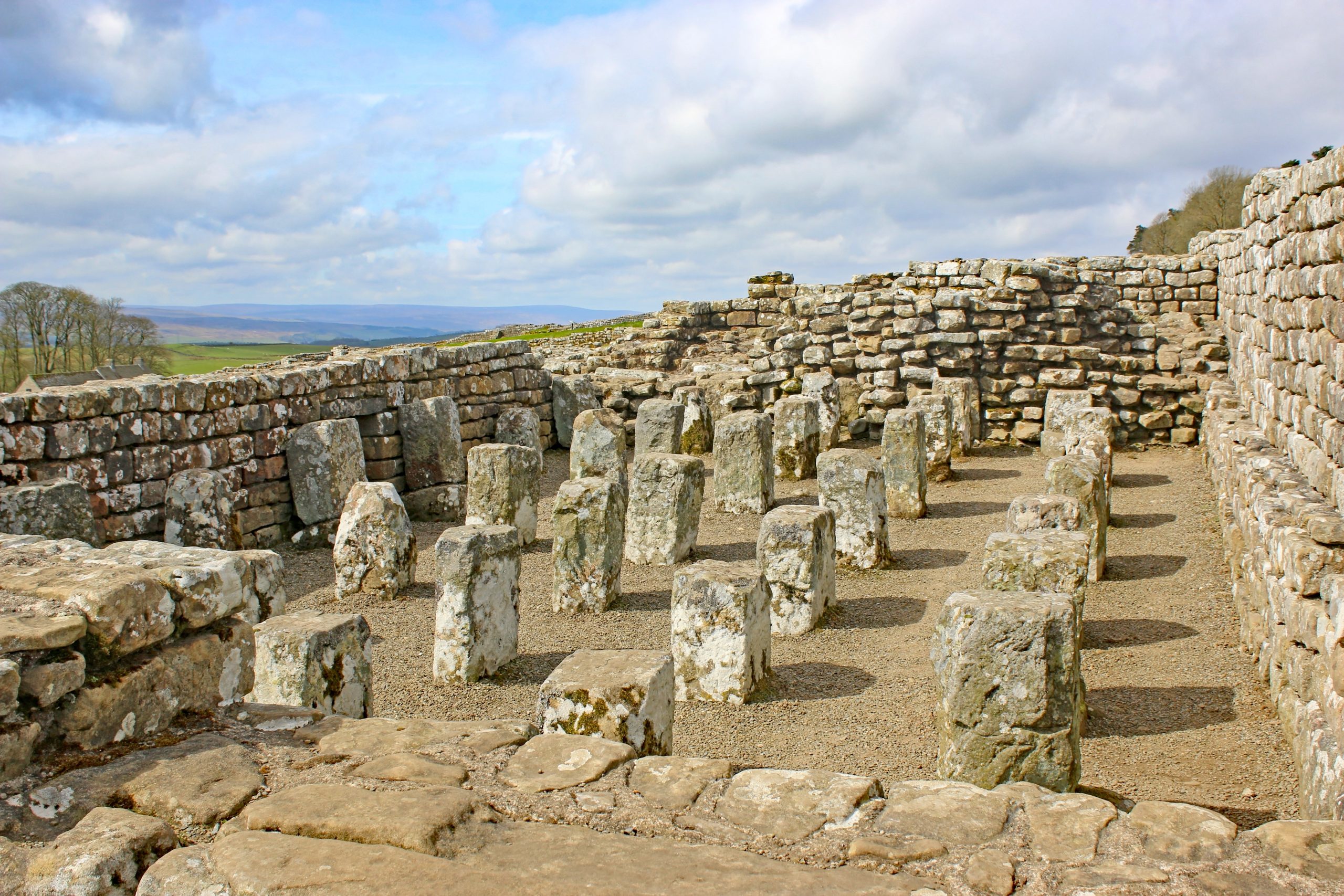
From well-preserved forts and temples to mysterious religious sites, each ruin along the Wall tells a story of military strategy, daily life, and spiritual beliefs. Join us as we uncover the top seven Roman ruins you won’t want to miss on your Hadrian’s Wall holiday.
Segedunum Roman Fort
Located at Wallsend, the eastern terminus of Hadrian’s Wall, Segedunum Roman Fort marks the starting point of this iconic structure, providing a striking contrast to the remote outposts further along the wall. Founded around AD 122, Segedunum was one of the largest and most significant forts in Roman Britain, housing a garrison of around 600 men tasked with defending the north eastern frontier. Its strategic position at the mouth of the River Tyne made it a key military and logistical hub for the Roman Empire.
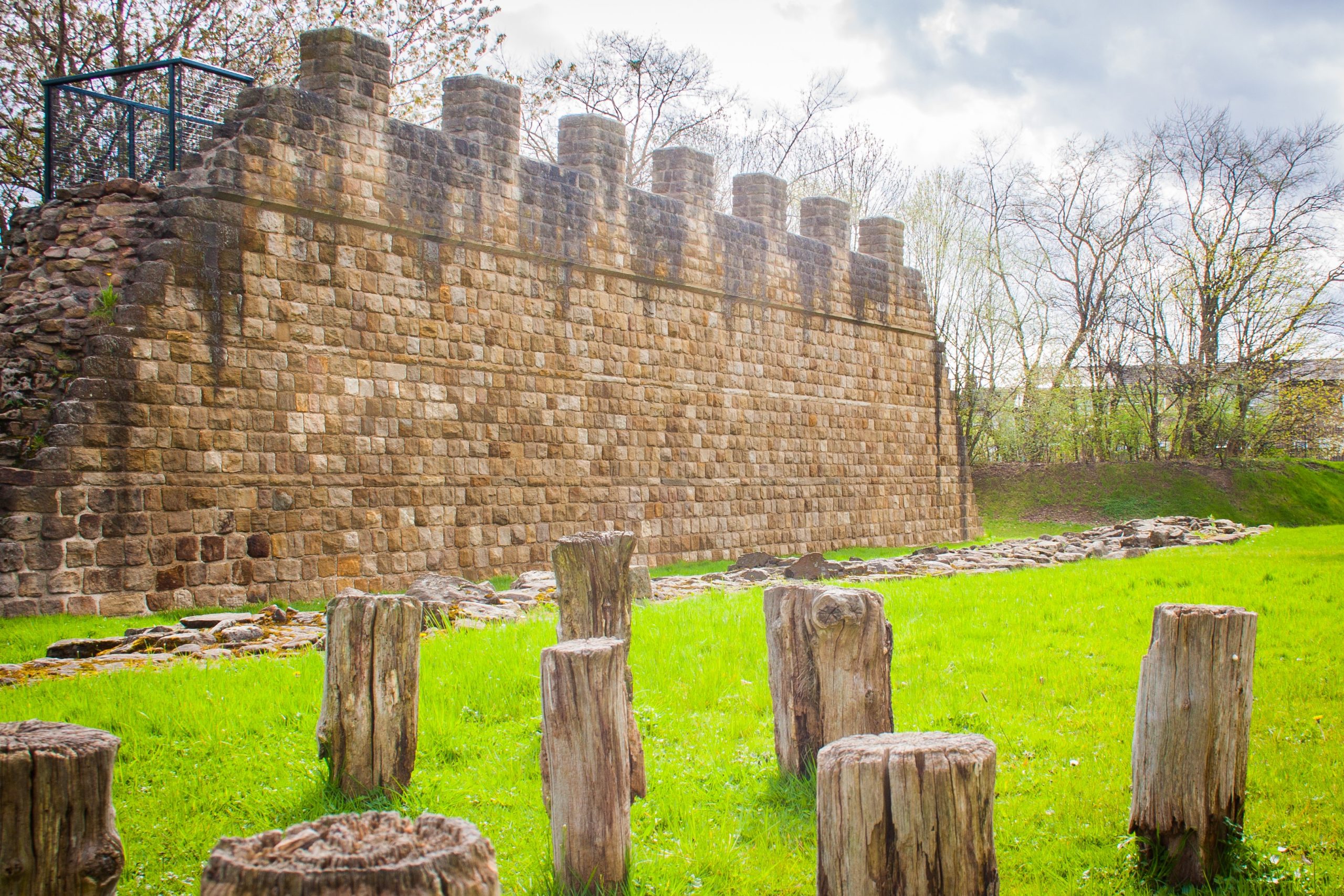
Today, Segedunum is home to a reconstructed bathhouse and a fascinating museum that delves into the fort’s history and its role in the broader Roman military system. Visitors can explore the well-preserved remains of the bathhouse, where Roman soldiers would have relaxed, while the museum showcases a range of artefacts, from everyday items to military equipment, shedding light on life within the fort.
A highlight of Segedunum is the reconstructed observation tower, which offers panoramic views of the surrounding area, including the modern city of Newcastle and the River Tyne. From the tower, visitors can imagine the soldiers’ vantage point as they kept watch over the empire’s northernmost frontier.
Segedunum’s rich history, interactive displays, and stunning views make it an essential stop for anyone exploring Hadrian’s Wall, offering an engaging look at life on the Roman frontier.
Carrawburgh Roman Fort
Carrawburgh Roman Fort (Brocolitia) is a small but fascinating site with a rich history. Originally built in the early second century AD, Carrawburgh served as a fort and supply post for Roman soldiers stationed along the wall. Its location, near the banks of the North Tyne river, provided strategic control over important routes and access to the surrounding landscape, making it a vital military outpost.
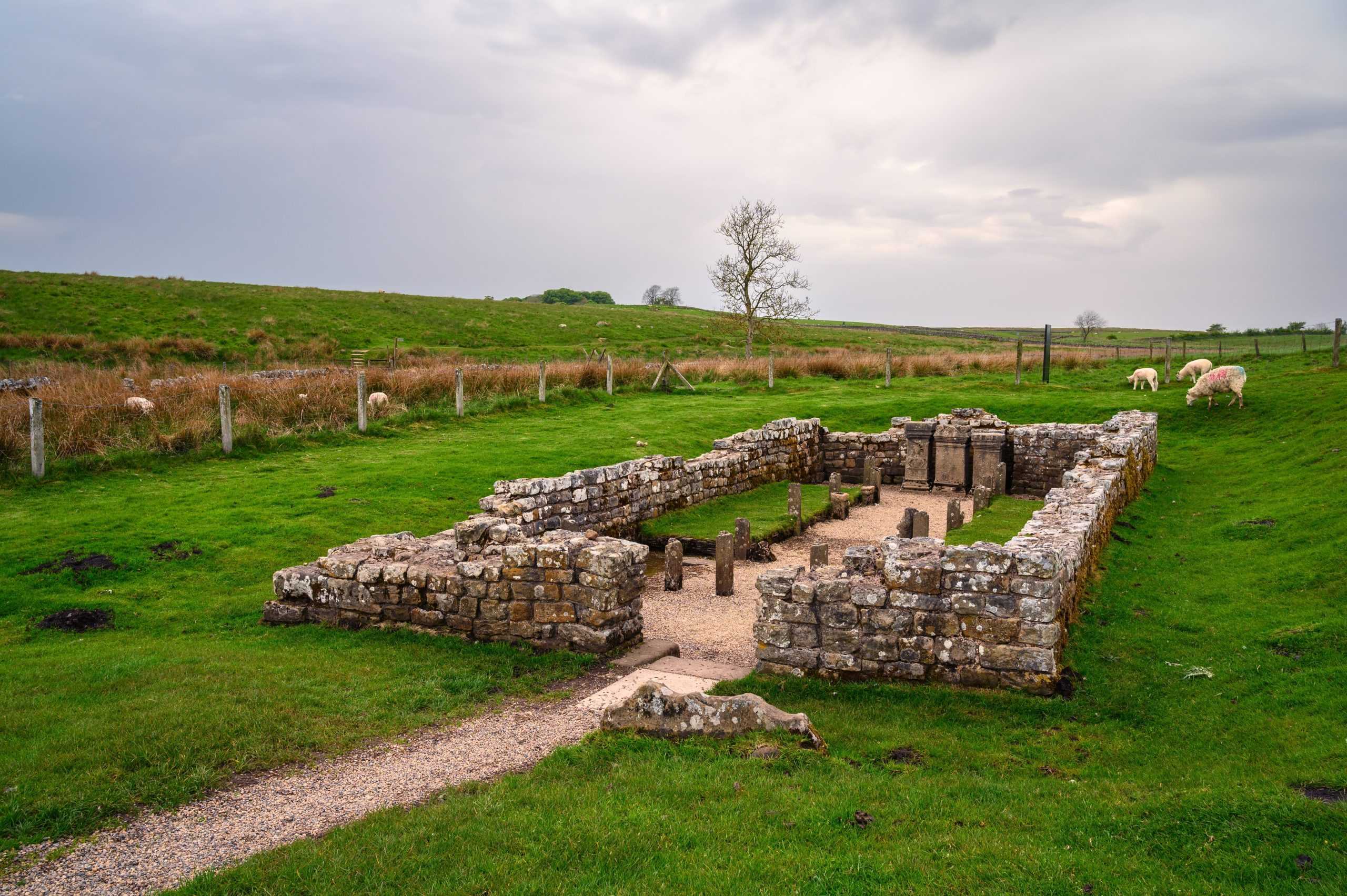
One of the most fascinating features of Carrawburgh is its Mithraeum, a small temple dedicated to the god Mithras. The Mithraeum, likely built by soldiers at the fort around AD 200, is one of the best-preserved examples in Britain and offers intriguing insights into Roman religious practices. Mithras was a popular deity among Roman soldiers, and the temple’s discovery sheds light on the personal beliefs and rituals that helped soldiers endure the challenges of life on the frontier. The temple’s location, within the fort’s grounds, suggests that it was a place of both spiritual and social importance for the Roman garrison.
While the fort itself is smaller compared to other forts along Hadrian’s Wall, its significance is immense. Visitors can explore the remains of the fort, including its bathhouse and barracks, while the nearby museum displays a range of Roman artefacts, including offerings made to Mithras. Carrawburgh is a captivating stop for those interested in Roman religion, military life, and the mysteries of the ancient world.
Chesters Roman Fort
Tucked beside the tranquil North Tyne river, Chesters Roman Fort (Cilurnum) offers a glimpse into the Roman Empire’s ingenuity and refinement. Built around AD 124, Chesters, home to 500 elite horsemen tasked with patrolling the rugged frontier, was one of the most luxurious cavalry forts along Hadrian’s Wall. What sets Chesters apart is its remarkably well-preserved bathhouse – a highlight for visitors. Walking through its rooms, you can imagine soldiers relaxing after long patrols, indulging in the Roman ritual of steam, cold plunges, and socialising. The riverside location of the fort adds to its charm, as you explore remnants of barracks, the commander’s quarters, and granaries that once stored supplies for this bustling outpost.
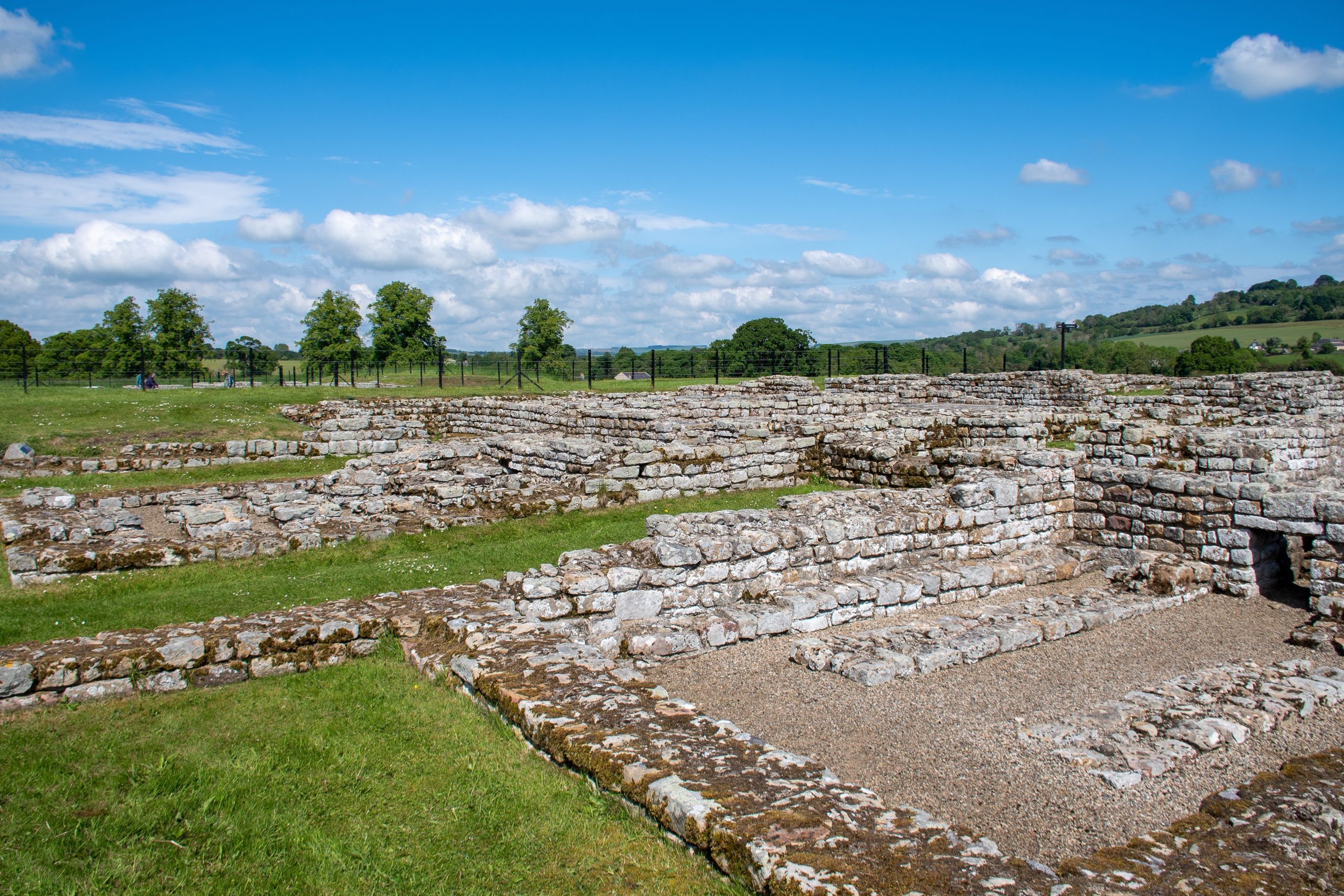
From the fort, you can follow stretches of Hadrian’s Wall and appreciate its strategic significance in guarding this remote northern boundary of the empire.
At the site’s museum, the Clayton Collection – a treasure trove of Roman artefacts gathered by Victorian antiquarian John Clayton – brings the past vividly to life. Sculptures, inscriptions, and tools shed light on the daily lives of soldiers and civilians who called Chesters home.
With its riverside beauty, fascinating ruins, and evocative artefacts, Chesters Roman Fort is a certain highlight for anyone walking the wall, combining history, nature, and an enduring sense of Roman ingenuity.
Vindolanda
Nestled in the rolling Northumberland countryside, Vindolanda is a treasure trove of Roman history and one of the most significant archaeological sites in Britain. Long predating Hadrian’s Wall, the fort’s first incarnation was built around AD 85, serving as a vital frontier outpost and a bustling hub for soldiers and their families. Its location on the Stanegate Road made it a strategic link between the military forts of Corbridge and Carlisle.
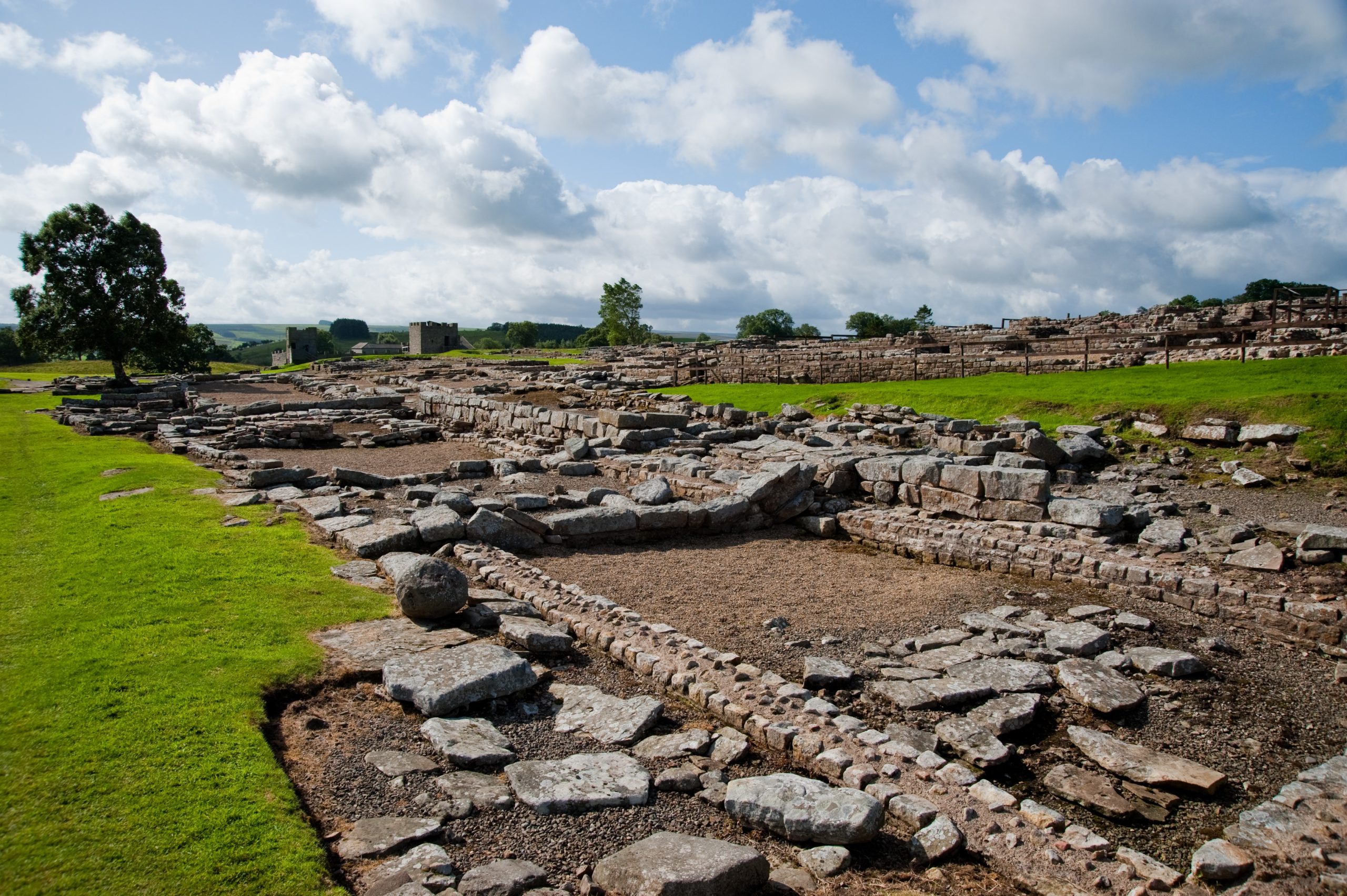
Vindolanda is perhaps best known for its extraordinary finds, particularly the Vindolanda Tablets. These fragile wooden slivers, inscribed with everyday messages, offer a rare and intimate window into Roman life – everything from duty rota’s to birthday invitations. They tell stories of resilience, camaraderie, and even homesickness on this distant edge of the empire.
Today, Vindolanda is a living archaeological site, with ongoing excavations that continue to yield remarkable discoveries. As you explore, you’ll find reconstructed sections of the fort and village, offering a real sense of what life here was like. The remains of bathhouses, barracks, and civilian dwellings highlight its dual role as a military and domestic settlement.
The on-site museum brings Vindolanda to life, showcasing exquisite finds such as leather shoes, jewellery, and weapons. For anyone walking Hadrian’s Wall, Vindolanda is a must-visit, a place where history rises vividly from the ground and where every stone whispers tales of the Roman frontier.
Housesteads Roman Fort
Perched high on a windswept ridge with commanding views over the Northumberland landscape, Housesteads Roman Fort (Vercovicium) offers an unparalleled glimpse into life on the edge of the Roman Empire. Built in AD 124, Housesteads was one of the most important military outposts along the wall, housing around 800 infantry soldiers tasked with defending the frontier.
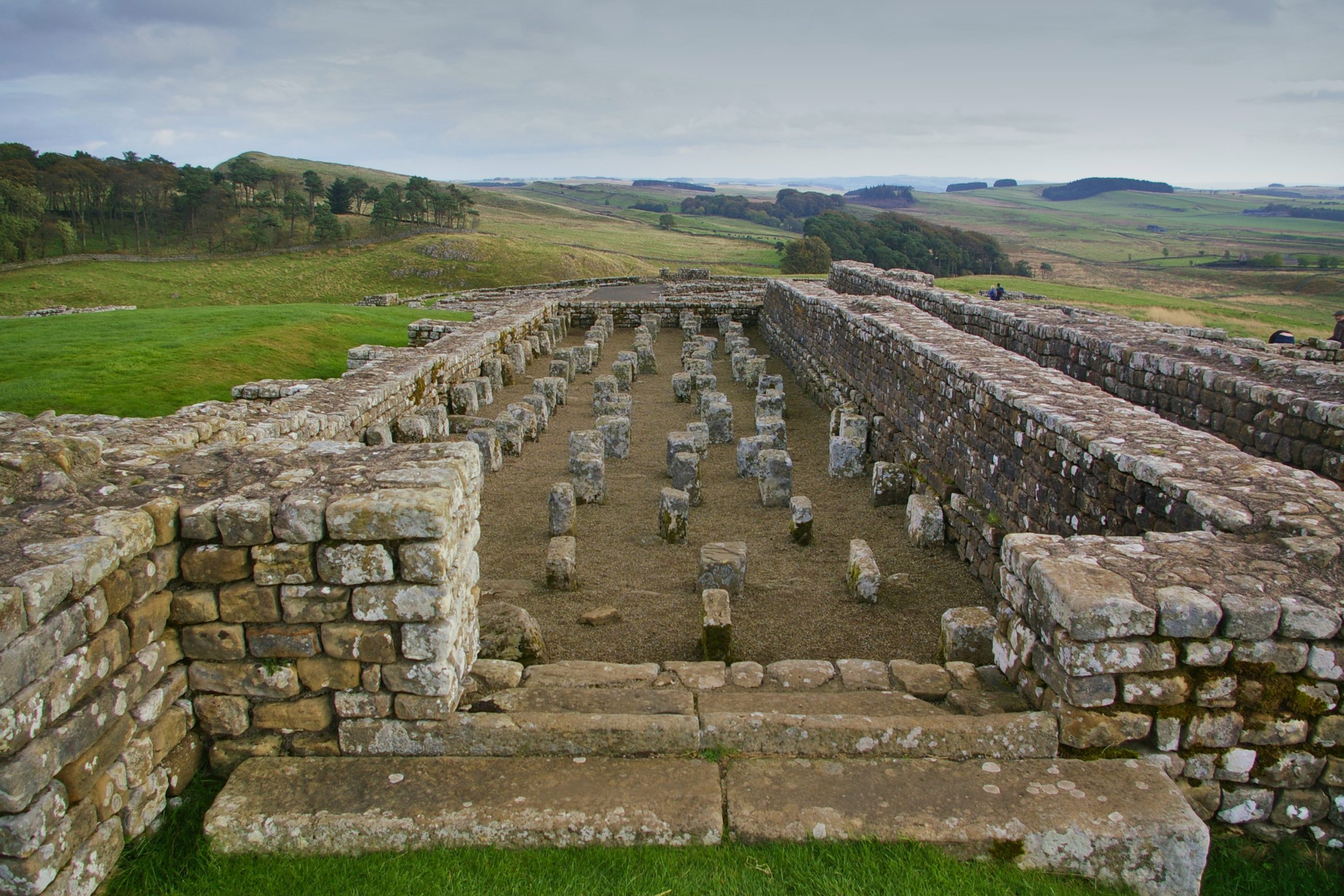
Strategically located, the fort controlled vital routes into Roman Britain, and its imposing position would have been both a deterrent and a statement of Roman power. Housesteads is remarkably well-preserved, revealing everything from the barracks and granaries to the fort’s latrines – a sophisticated system showcasing Roman engineering prowess.
Wandering through the ruins, you can almost hear the echoes of Roman life; soldiers drilling in the parade ground, craftsmen repairing armour, and traders plying their goods. The views from the fort extend for miles, reminding visitors of the vast wilderness Roman soldiers faced daily.
Today, Housesteads invites you to explore its fascinating history through both its ruins and the adjoining museum, where artefacts like tools, pottery, and inscriptions bring the past vividly to life. Whether you’re intrigued by Roman military strategy, marvel at ancient engineering, or simply want to soak in breathtaking views, Housesteads is an unmissable stop on your journey along Hadrian’s Wall.
Milecastle 42
Perched dramatically on the edge of a former quarry, Milecastle 42 at Cawfields offers a unique and atmospheric glimpse into the smaller fortifications that dotted Hadrian’s Wall. Built to house a small garrison, these milecastles were spaced at regular intervals along the Wall, providing checkpoints, defensive positions, and accommodation for Roman soldiers tasked with monitoring movement across the frontier.
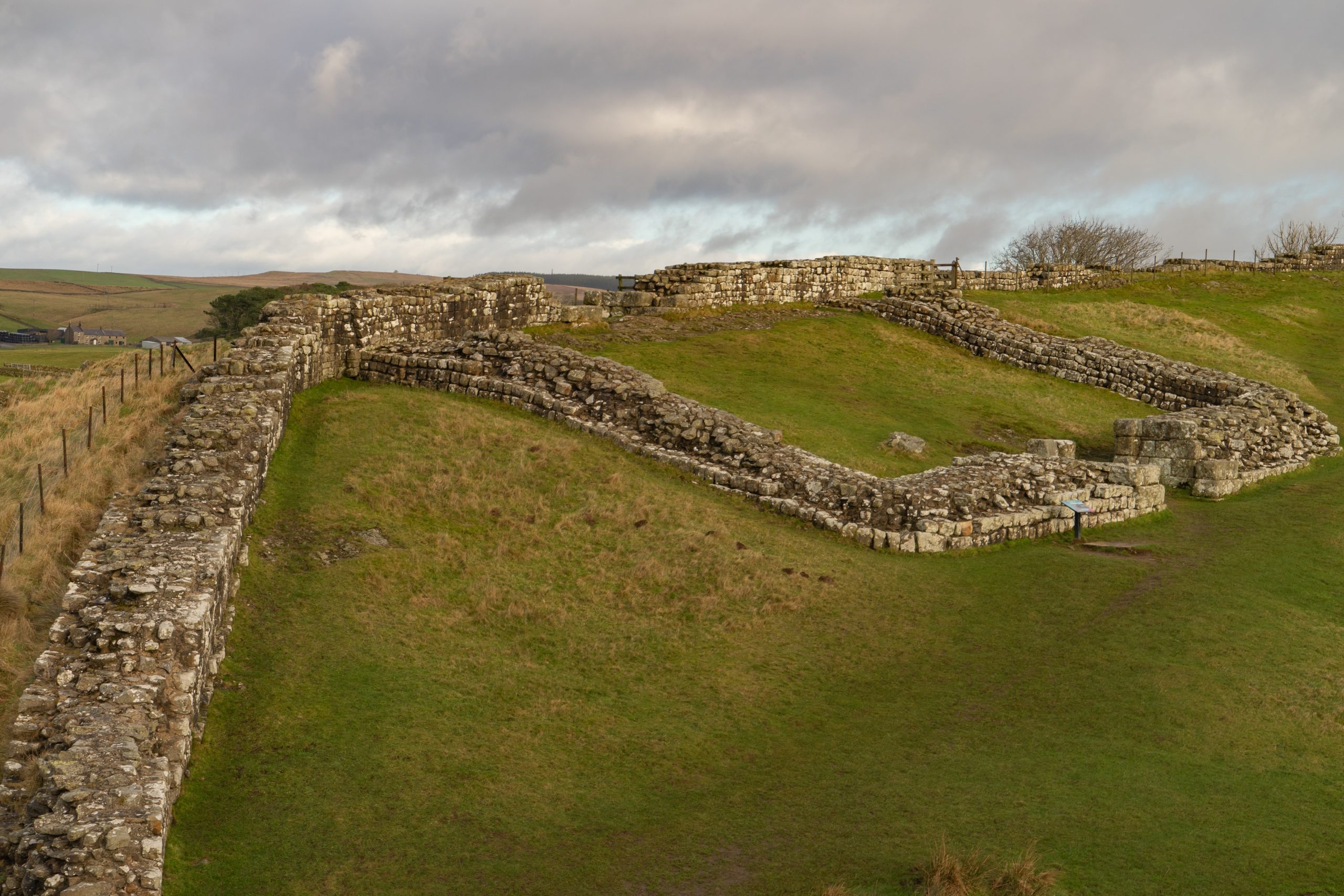
Milecastle 42, thought to date back to AD 122, retains its foundation stones, giving visitors a clear sense of its compact layout. Unlike the larger forts, these structures were designed to house only a handful of men, likely led by a centurion. The remains include gateposts and part of the Wall itself, showcasing the craftsmanship and strategic planning of the Roman engineers.
The setting of Milecastle 42 is particularly striking, offering views of the surrounding countryside that stretch for miles. The proximity to Cawfields Quarry adds an intriguing layer of history, as the site illustrates how the landscape was shaped both by the Romans and later industrial activity.
For those walking Hadrian’s Wall, Milecastle 42 is an evocative stop, reminding visitors of the countless smaller structures that were vital to the operation of this vast defensive system. It’s a place to pause, reflect, and imagine the isolated lives of the Roman soldiers who once stood watch here.
Birdoswald Roman Fort
Located in the scenic Irthing Valley, Birdoswald Roman Fort (Banna) offers a captivating glimpse into Roman life along the northern frontier of the Empire. Birdoswald was a vital military outpost tasked with defending the western reaches of Roman Britain. The fort’s long stretch of the Wall, coupled with its commanding views of the surrounding landscape, made it an ideal location for overseeing movements across the valley.
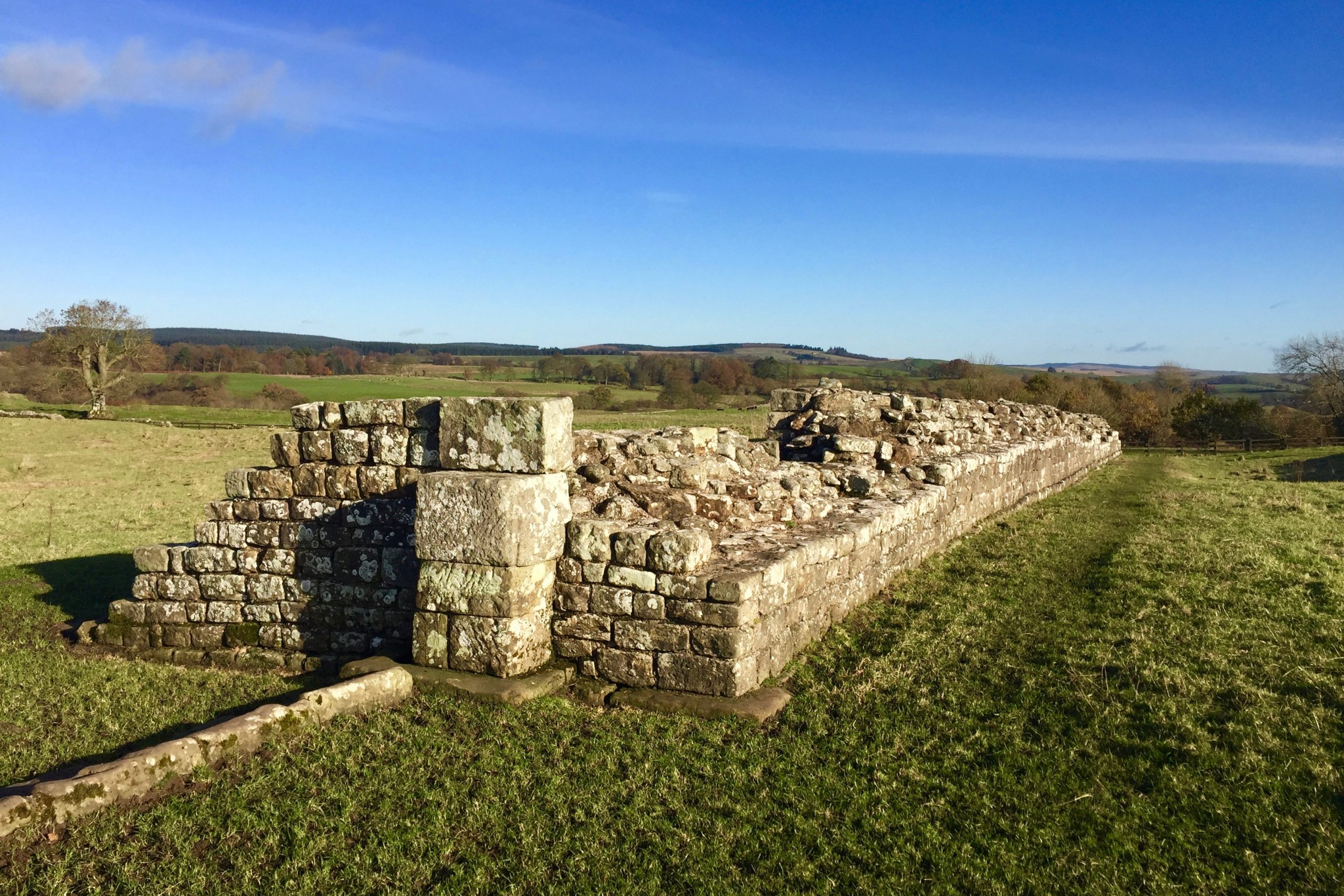
Again dating back to around AD 122, Birdoswald’s walls are among the best-preserved along the Wall, allowing visitors to walk in the footsteps of Roman soldiers and imagine life at this frontier stronghold. The fort once housed a garrison of infantry soldiers, and remnants of barracks, granaries, and other structures provide insights into the daily routines and military operations that took place here.
One of the standout features of Birdoswald is its stunning location. The fort’s position offers panoramic views across the Irthing Valley, making it an excellent spot for walkers to pause and take in the tranquil surroundings. The nearby museum features a selection of Roman artefacts, offering additional context to the site’s rich history and that of Roman Britain.
Walking Hadrian’s Wall is a fascinating journey through history. With each step, and with the backdrop of and breathtaking landscapes, you’ll uncover the rich stories of Roman soldiers and ancient engineering. Whether you’re a seasoned walker or a casual explorer, the Wall offers a captivating experience for all. So, pack your boots, embrace the adventure, and walk in the footsteps of the Romans along this iconic path. Ready to embark on your own journey? Get in touch and we’ll start planning your Hadrian’s Wall holiday today! Email us [email protected] or call us on 017687 72335 to speak with one of our friendly team.